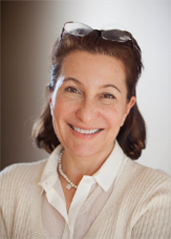 Linda Bilmes, Daniel Patrick Moynihan Senior Lecturer in Public Policy, created the Harvard Kennedy School’s first-ever field lab, which combines in-class learning with real-world project work in local and state governments. Since its inception in 2005, the course has involved hundreds of students from across Harvard graduate schools. It is an advanced course focused on public finance, operations and budgeting. Each year, Bilmes and her teaching team receive dozens of applications from mayors and city managers. She and her team select a small number of intellectually challenging projects with buy-in at the highest level. The selected partners describe their projects to students at the start of the term; projects range from addressing homelessness to municipal debt. Then students go on site visits to “get a sense of the crunchiness” of each task and to rank clients by interest before they are sorted into collaborative teams. At the end of the semester, students present recommendations to clients.
Linda Bilmes, Daniel Patrick Moynihan Senior Lecturer in Public Policy, created the Harvard Kennedy School’s first-ever field lab, which combines in-class learning with real-world project work in local and state governments. Since its inception in 2005, the course has involved hundreds of students from across Harvard graduate schools. It is an advanced course focused on public finance, operations and budgeting. Each year, Bilmes and her teaching team receive dozens of applications from mayors and city managers. She and her team select a small number of intellectually challenging projects with buy-in at the highest level. The selected partners describe their projects to students at the start of the term; projects range from addressing homelessness to municipal debt. Then students go on site visits to “get a sense of the crunchiness” of each task and to rank clients by interest before they are sorted into collaborative teams. At the end of the semester, students present recommendations to clients.
Engaging with course material and serving communities at the same time
The benefits
Students develop a deeper understanding of the course material through their partnerships with the community. Bilmes noted that “it’s very hard to understand the complexity and scale without doing it in practice.” Through the generosity of the Rappaport Institute, students’ critical learning continues in the form of summer fellowships to further hone their skills and provide deeper support for the community. Over the past 3 years, the program has widened to provide field projects nationwide through the Harvard-Bloomberg Cities program. “It’s my favorite thing I do as a teacher because it is so rewarding to watch the whole process,” Bilmes reflected. “[By the end,] the students become real experts.” This commitment continues long after the semester ends, with many students going into similar work after graduation or hiring peers who completed the course. Over two-thirds of students who enroll in the field lab have gone on to take jobs in local and regional governments, transportation agencies, school districts and similar organizations after graduation.
"It's a win-win situation because the communities help our students get this kind of immersion, and we provide support to cities and communities, many of whom are short-staffed."
The challenges
Curating such a multidimensional class is a true team effort. Those involved, including the TFs, have to be committed to the aims of the course. For a course offered each spring semester, the work begins in the fall with “scoping” the projects so they can be completed within a semester, and subsequent summer fellowship. Moreover, the community partners also must mirror a similar dedication to collaboration, with each applicant demonstrating top- and staff-level investment. Despite the time-intensive work, this approach is critical for meeting the course objectives.
Takeaways and best practices
-
Immerse students in projects before assigning them.
Bilmes stresses that the all-day site trip is fundamental for students to match well with interests and clients. The visits allow students to experience and understand community partners’ environments in a tangible way. “They often say that what they see on the field trip changes their minds.” -
Build diverse collaborative teams.
Intentionally building student and teaching fellow teams based on a range of expertise and styles is vital to the learning experience. While Bilmes tests each student individually to prove competency, they work to ensure “skills and diversity in the teams” through personal review of students’ applications, backgrounds, and schedules. -
Be flexible—especially during a pandemic.
In response to the COVID-19 crisis in particular, students quickly reframed their projects to support community partners based on new and immediate needs, including helping organizations apply for funding. Bilmes shifted her lesson plans and created “bespoke” classes, which were tailored to the competencies that each student group needed. “They were contributing directly to the crisis and they were using these skills as never before.”
Bottom line
Bilmes’ course combines community collaboration while inducting students into the field itself. Learning from the community while supporting them generates a deeper and more meaningful classroom experience that students carry into the next stage of their lives. As one student remarked, “More than any other experience at the Kennedy School, your course has guided me to a level of academic excellence I had not thought myself capable of.” Or, put more simply in another review: “This is why I came back to school.”
